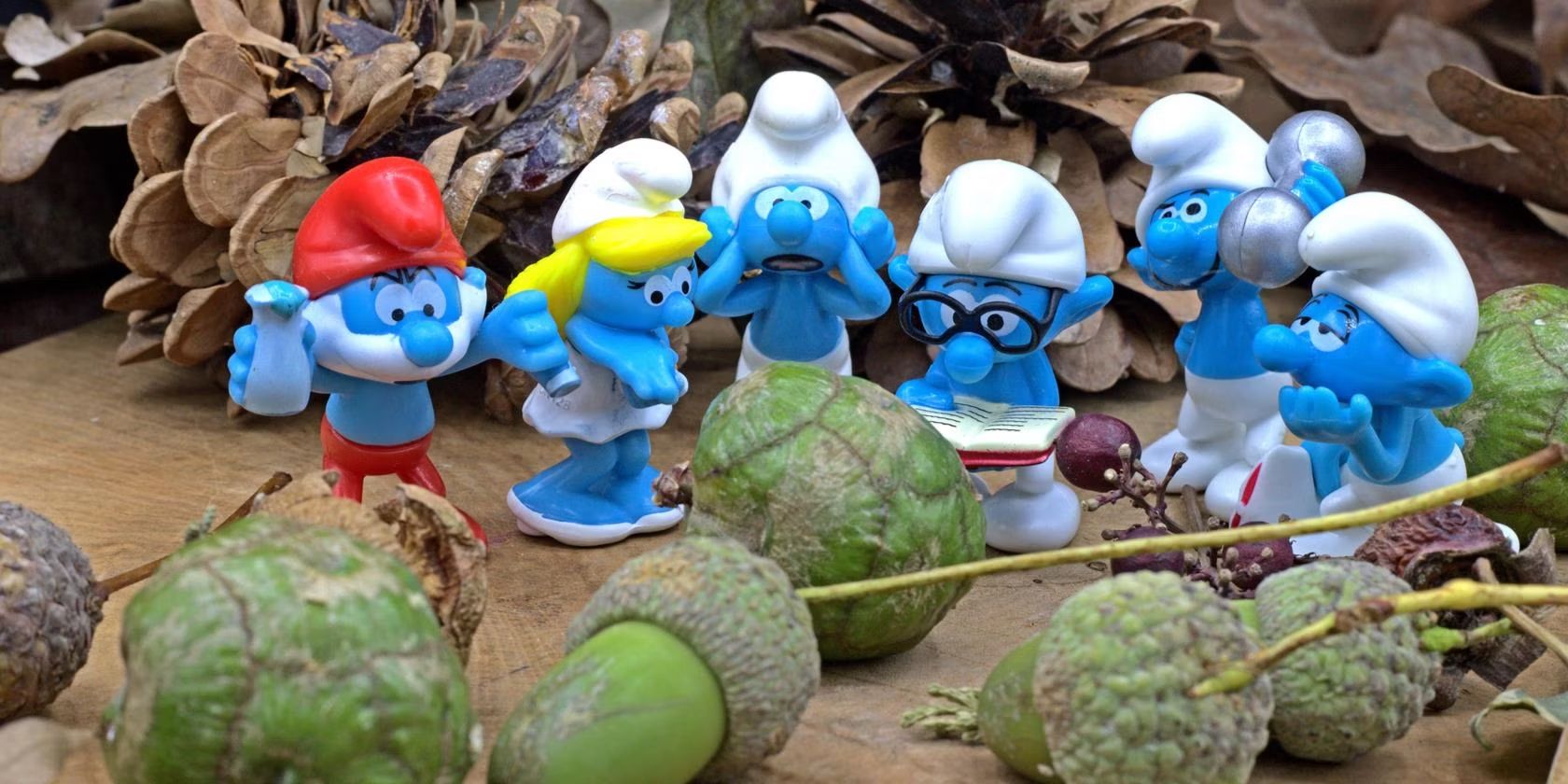Introduction
Online gaming has become increasingly popular over the years, attracting millions of players from around the world. As the gaming community grows, so does the terminology associated with it. One term that has gained significant attention is “smurfing”. If you’ve ever played online games, chances are you’ve come across this term, but where did it come from and what does it mean?
The term “smurf” originated in the world of online gaming and has since become a common term used across various gaming communities. It refers to an experienced player creating a new account with a different or fake identity to deliberately play against lower-skilled opponents, often to dominate and win matches effortlessly.
This practice of smurfing has sparked both admiration and frustration within the gaming community. Some see it as a way to challenge themselves, experiment with different playstyles, or play with friends who are at a lower skill level. However, for many others, smurfing is considered unfair, unsportsmanlike, and detrimental to the overall gaming experience.
In this article, we will explore the origins of the term smurfing in online gaming, examine its positive and negative implications, discuss its evolution over time, provide tips on how to spot a smurf, and offer strategies for dealing with smurfs in online gaming. With this information, you’ll have a better understanding of the world of smurfing and how it impacts the online gaming community.
The Origin of the Term Smurf in Online Gaming
The term “smurf” in online gaming can be traced back to the early 1990s and the popular game called “Warcraft II: Tides of Darkness”. Two talented players, Geoff “Shlonglor” Fraizer and Greg “Warp” Boyko, developed a strategy to create secondary accounts with whimsical names, such as PapaSmurf, Smurfette, and BrainySmurf. They used these alternate accounts to improve their chances of winning matches against less-skilled opponents.
Their strategy quickly gained attention and was adopted by other players, who followed suit by creating their own secondary accounts to dominate lower-level competitions. The use of the term “smurf” spread throughout the gaming community and became synonymous with this practice, even beyond the world of Warcraft II.
The inspiration for the term “smurf” came from the popular cartoon series “The Smurfs”, where small blue creatures with individual personalities and characteristics lived in a village. The smurfs were known for their unity, teamwork, and ability to overcome challenges together. This concept translated well to the gaming community, where players would create new accounts to band together, dominate opponents, and achieve victory.
Over time, the term “smurfing” expanded beyond Warcraft II and became a commonly used term in various online games, including popular titles like League of Legends, Counter-Strike, and Dota 2. The practice itself has evolved, with smurfs using new techniques and strategies to gain an unfair advantage over less-experienced players.
While the exact origins of the term may be debatable, the influence of Geoff Fraizer and Greg Boyko in popularizing smurfing cannot be denied. Their creative use of secondary accounts and the playful naming scheme left a lasting impact on the gaming community, giving rise to the phenomenon we know today as “smurfing” in online gaming.
The Positives of Smurfing in Online Gaming
While smurfing in online gaming may be a controversial practice, it does come with some potential benefits. Understanding these positives can provide insight into why some players choose to engage in this behavior:
- Challenge and Skill Improvement: Smurfing allows experienced players to face tougher opponents and push the boundaries of their skills. By playing against lower-ranked players, smurfs can experiment with new strategies, refine their techniques, and overcome greater challenges.
- Playing with Friends: In games with a significant skill disparity among friends, smurfing allows players of different skill levels to play together. By using a lower-ranked account, experienced players can join their less-skilled friends and still have an enjoyable and competitive gaming experience.
- Reduced Pressure: Smurfing provides a break from the intense competition often found in higher-ranked matches. It allows players to relax, have fun, and play without the constant pressure to perform at their best.
- Mentoring and Teaching: Smurfing can be utilized as a way for experienced players to mentor and teach newer or less-skilled players. By playing alongside them on secondary accounts, smurfs can provide guidance, offer tips and strategies, and help them improve their gameplay.
- Testing New Strategies: Smurfing enables players to test out new playstyles, strategies, and techniques without risking their main account’s ranking. This experimentation contributes to the growth and evolution of the game’s meta, benefiting the entire gaming community.
It is important to note that while there are potential upsides to smurfing, these benefits should not outweigh the ethical considerations and negative impact it can have on the gaming community. Smurfing can create an unfair playing field, diminish the enjoyment of lower-ranked players, and discourage new players from continuing with the game.
Ultimately, it is crucial for players to consider the consequences of their actions and strike a balance between personal growth and maintaining a fair and enjoyable gaming environment.
The Negatives of Smurfing in Online Gaming
While smurfing may offer certain advantages to the individuals engaging in this practice, it also brings forth a host of negative consequences for the online gaming community as a whole. These negatives cannot be overlooked when discussing the impact of smurfing:
- Unfair Competition: Smurfing creates an unbalanced playing field where highly skilled players dominate matches against less-experienced opponents. This not only diminishes the experience for lower-ranked players but also discourages them from continuing to play the game.
- Demoralization and Frustration: Constantly being matched against smurfs can be demoralizing and frustrating for players who are genuinely trying to improve their skills. It can lead to feelings of helplessness, causing them to lose interest in the game and ultimately impacting the player base.
- Stifling New Player Growth: Smurfing can be discouraging for new players trying to learn the game. Constantly being pitted against highly skilled smurfs can prevent them from developing their abilities and rob them of the opportunity to enjoy the learning curve that comes with playing against opponents of similar skill levels.
- Tarnished Reputation: Smurfing tarnishes the reputation of the gaming community. It is seen as a form of cheating and unfair play, leading to negative perceptions of the game itself and the players involved in smurfing.
- Ranking System Manipulation: Smurfing disrupts the accuracy of the game’s ranking system by artificially inflating lower-ranked accounts. This creates a distorted representation of player skill and undermines the integrity of competitive gameplay.
It is important to recognize that the negatives associated with smurfing outweigh the potential benefits. Smurfing disrupts the fairness, growth, and integrity of the online gaming experience, ultimately detracting from the enjoyment and inclusivity of the gaming community as a whole.
As a community, there is a collective responsibility to discourage and address smurfing in order to uphold fair play and ensure a positive gaming environment for all players.
The Evolution of Smurfing in Online Gaming
Since its inception, smurfing in online gaming has evolved significantly, adapting to changing gaming landscapes and becoming more prevalent across different games. The evolution of smurfing can be attributed to several factors:
- Increasing Popularity: As online gaming continues to grow in popularity, so does the practice of smurfing. With a larger player base, the number of smurfs has also increased, making it more common to encounter them in matchmaking queues.
- Improved Accessibility: The advent of free-to-play games and the ease of creating additional accounts have made smurfing more accessible than ever before. Players no longer need to purchase separate copies of the game or go through complex processes to create new accounts, making it more enticing for individuals to engage in this behavior.
- Streaming and Content Creation: The rise of streaming platforms and content creation has contributed to the rise of smurfing as well. Highly skilled players may create smurf accounts to provide entertaining content, showcase impressive gameplay, or engage in audience interactions by playing with viewers at lower skill levels.
- Monetization and Account Selling: Smurfing has also become a lucrative business for some individuals. Players can sell high-ranked accounts or offer smurfing services, where they play on behalf of others to boost their accounts to higher ranks. This monetization aspect has further fueled the prevalence of smurf accounts in online gaming.
- Advanced Techniques and Strategies: Over time, smurfs have developed more sophisticated techniques to avoid detection and maximize their impact. They may intentionally underperform in initial matches to maintain lower ranks, use VPNs to hide their identity, or adapt their playstyle to avoid suspicion from both opponents and game developers.
The evolution of smurfing has presented new challenges for game developers and communities in combating this behavior. Game companies have implemented various measures such as stricter detection systems, improved matchmaking algorithms, and penalties for smurfing to discourage and minimize its prevalence. However, smurfing continues to persist as a persistent issue within the online gaming ecosystem.
It will require ongoing efforts from both game developers and the gaming community at large to address the evolving nature of smurfing and create a fair and enjoyable gaming experience for all players.
How to Spot a Smurf in Online Gaming
Identifying a smurf account while playing online games can be challenging, as smurfs often go to great lengths to disguise their true skill level. However, there are several indicators that can help you spot a potential smurf:
- Inconsistent Performance: Smurfs often exhibit highly skilled gameplay that is mismatched with the level of their account. If a player consistently performs at an extraordinary level compared to others in the same rank, it may be a sign of smurfing.
- Rapid Account Progression: Smurf accounts tend to progress through ranks quickly due to the high skill level of the player behind them. If you notice a player rapidly climbing the ranks or consistently dominating matches, it could indicate a smurf account.
- Unusually Low Playtime: Smurf accounts typically have a significantly lower playtime compared to players at the same skill level. If a player exhibits exceptional skill despite having a relatively new account with minimal playtime, it may be an indication of smurfing.
- Unusual Account Names: Smurfs often choose obscure or generic names for their secondary accounts to avoid detection or recognition. If a player’s account name seems suspiciously unrelated to their skill level or gaming ability, it may be worth investigating further.
- Inconsistent MMR: Matchmaking rating (MMR) is a measure of a player’s skill level. If you notice a player with a significantly lower MMR than their demonstrated skill in-game, it could suggest that they are intentionally keeping their rating low to continue dominating matches.
- Unusual Account Behavior: Observing unusual behavior, such as intentionally losing matches or exhibiting inconsistent playstyles, can be an indication of a smurf account. Smurfs may deliberately underperform or showcase different playstyles to avoid raising suspicion.
It is important to note that these indicators are not foolproof, and there is a possibility of misjudgment. Some players may simply be exceptionally skilled or exhibit a natural variance in their performance. However, keeping an eye out for these signs can help you identify potential smurf accounts and contribute to maintaining a fair and balanced gaming environment.
If you suspect someone of smurfing, it is recommended to report them to the game’s support or moderation team, who can investigate further and take appropriate action if necessary.
Strategies to Deal with Smurfs in Online Gaming
Dealing with smurfs in online gaming can be frustrating, but there are strategies you can employ to mitigate their impact and maintain a positive gaming experience:
- Report Suspicious Accounts: Most online games have reporting systems in place. If you suspect someone of smurfing, report their account to the game’s support or moderation team. Provide any evidence or observations that support your claim, allowing them to investigate and take appropriate action.
- Focus on Personal Improvement: Instead of focusing on defeating smurfs, shift your focus towards personal growth and skill improvement. Use encounters with smurfs as an opportunity to learn from their gameplay, analyze their strategies, and identify areas where you can enhance your own skills.
- Seek and Join Communities: Joining online communities or forums dedicated to the specific game can be beneficial. Engage with other players, share experiences, and seek advice on how to handle smurfs. Collaborating with like-minded individuals can provide support and strategies for dealing with such challenges.
- Find Equally Skilled Players: Look for opportunities to play with individuals who are on a similar skill level. Participating in ranked matchmaking or forming a team of similarly skilled players can minimize the chances of encountering smurfs and provide a fairer competitive environment.
- Practice Anti-Smurf Strategies: Develop specific strategies to counter smurfs in-game. This may involve focusing on teamwork, communication, and adapting your playstyle. Smurfs thrive on individual dominance, so working together as a team can help level the playing field.
- Stay Positive and Have Fun: Don’t let encounters with smurfs dampen your enthusiasm for the game. Remember that gaming is meant to be an enjoyable experience. Focus on having fun, finding like-minded players, and building positive gaming memories.
It is crucial to maintain a healthy mindset and not let the presence of smurfs negatively impact your overall enjoyment of the game. By employing these strategies, you can minimize the impact of smurfs and create a more positive gaming experience for yourself and those around you.
Additionally, it is important to continue advocating for fair play and raise awareness about the negative consequences of smurfing. By discussing the issue with the gaming community, game developers, and moderation teams, we can collectively work towards finding solutions to combat smurfing and foster a more enjoyable and competitive gaming environment for all players.
Conclusion
The phenomenon of smurfing in online gaming has both positive and negative implications for the gaming community. While smurfing can provide experienced players with new challenges, opportunities to play with friends, and a chance to experiment with different strategies, it also creates an unfair playing field, demoralizes less-experienced players, and undermines the integrity of the ranking system.
Understanding the origin of the term smurf and the evolution of smurfing in online gaming helps shed light on its widespread practice across various games. It is important to note that while smurfing may have its benefits, such as skill improvement and playing with friends, these advantages should not overshadow the negative impact it has on the gaming community.
Identifying smurf accounts and implementing strategies to deal with them, such as reporting suspicious accounts and focusing on personal growth, can help mitigate the impact of smurfing. By seeking support from gaming communities and finding equally skilled players to compete with, players can work towards creating a more level playing field.
The responsibility to address smurfing falls on both the gaming community and game developers. It is crucial to continue raising awareness about the negative consequences of smurfing and advocating for fair play. Developers can implement measures to discourage and penalize smurf accounts, while fostering an inclusive and enjoyable gaming experience for players of all skill levels.
Ultimately, smurfing in online gaming poses challenges that require ongoing efforts to address. By encouraging fair play, promoting positive gaming experiences, and working together as a community, we can strive towards creating a more balanced and enjoyable online gaming environment for everyone.

























